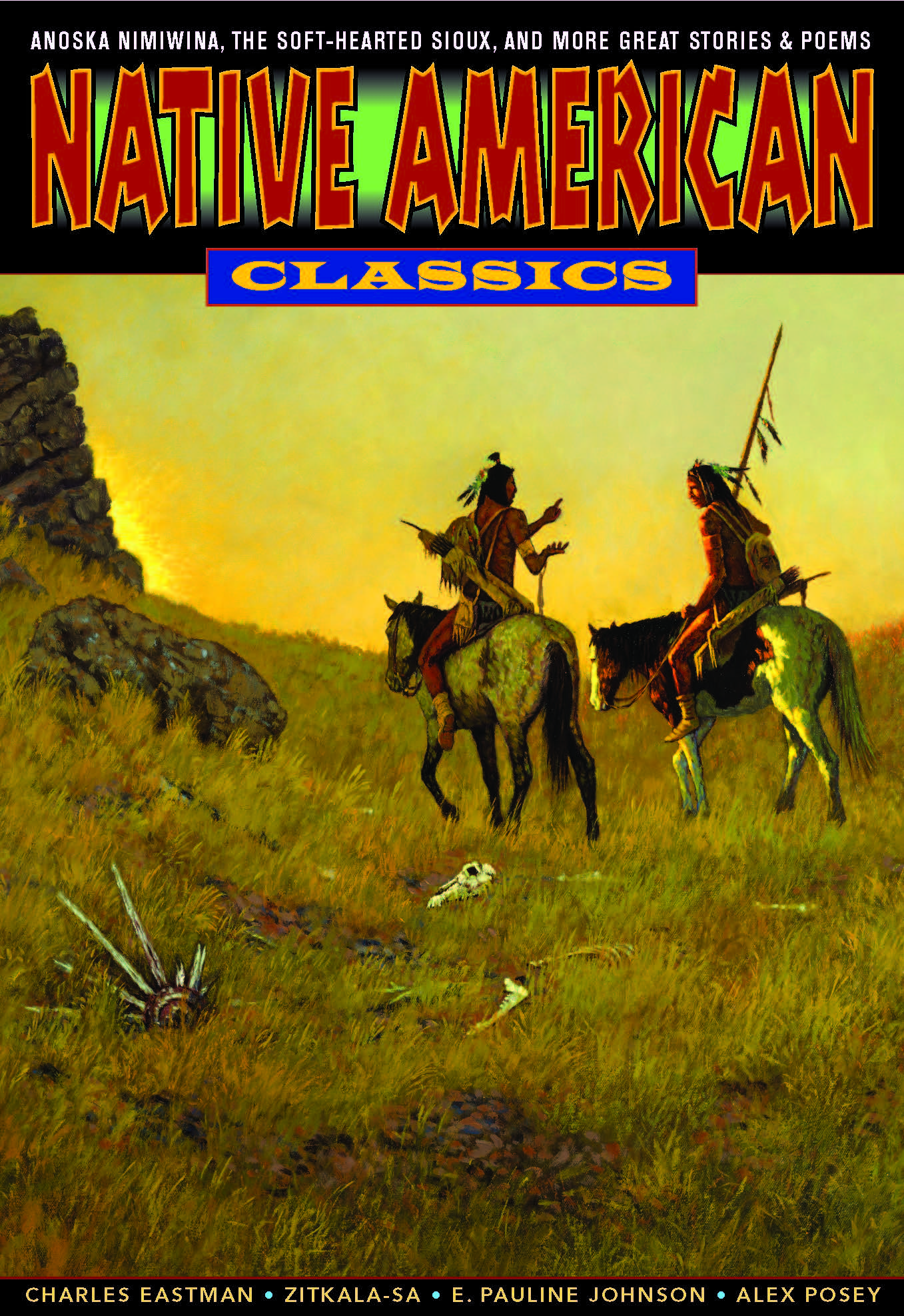
- Available Rights:
- Print – foreign
- Digital – worldwide
- suggested for readers 12 to adult
- 144 pages
- Color
Native American Classics presents great stories from America’s earliest indigenous writers, illustrated by contemporary artists including Timothy Truman, Robby McMurtry, Weshoyot Alvitre, Roy Boney, and Marty Two Bulls. Featured are On Wolf Mountain by Charles Eastman, The Soft-Hearted Sioux by Zitkala-Sa, and How the White Race Came to America by Handsome Lake. Plus eight poems and nine more stories of adventure, humor and tragedy. The volume is co-edited by noted Native authors John E. Smelcer and Joseph Bruchac, who also contribute selections.
The Graphic Classics® series presents the works of great authors in comics adaptations and heavily-illustrated text. The adaptations are written at an adult level, and utilize as much of the author’s original language as possible. Our goal is to create books that are enjoyable for adults, yet accessible to children ages twelve and up. Unlike other comics adaptations of classics, these books are anthologies; they present a large number of short stories, with occasional poems and abridged novels, each illustrated by a different contemporary artist. Artists are recruited from the fields of comics, book illustration, and fine arts, and include new artists as well as industry veterans from all over the world.
“From the incredible artists they enlist to bring these stories to life to the story selections themselves, everything about these books is a delight.”
— Alex Haas, Indy Comic Review
“So imaginative, evocative, and compelling in their execution that they leave readers with no choice but to crave more.”
— Michael Dooley, Imprint
“The Graphic Classics series has cast a wide net lately, branching out from illustrated adaptations of short stories by the likes of Poe and Lovecraft to surveys of tales centering on African Americans and, now, Native Americans. Collecting stories by Native American writers from the mid-nineteenth to early twentieth centuries, this is a fine plunge into a culture that’s been shamefully underrepresented in the format, infrequent exceptions like the anthology Trickster (2010) and George O’Connor’s Journey into Mohawk Country (2006) notwithstanding. Not surprisingly, many of the poems and stories focus on the tense relationship with the “White Man” and the fading of the Native American way of life, and a tone of melancholy pervades much of the book. Toward the middle, though, humorous stories pop up, including an encounter between a coyote god and a wild potato, and hope also springs up, as in the poem “Changing Is Not Vanished.” Much care has been taken to match the appropriate art style to each adaptation, and though no big names supply illustrations, each story—from the tragic to the funny—slips gracefully into its visuals. Grades 7-12.”
— Jesse Karp, Booklist
“Once again Graphic Classics demonstrates the art of comics adaptation with its new collection, Native American Classics. Pulling from a rich tradition of fiction, poetry, and oral narrative, and illustrated by a who s who of Native American creators, this twenty-fourth volume of the series sets the standard for comics and its engagement with American ethnic identity.”
–Derek Royal, ComicsAlternative.com
“A good deal of the excitement readers will undoubtedly share upon cracking open Native American Classics is the sense of experiencing early writers at the front lines of what was and remains literally a clash of civilizations. For example, The Soft-Hearted Sioux , by Zitkala-Sa, tells of a young man with Bible in hand returning to his tribe after graduating from a missionary school. His naive attempt at proselytizing to save the soul of his dying father leads to a rite of passage that turns the biblical tale of the Prodigal Son on its head and ends with the kind of multicultural ambiguity that would do even the most hardened postmodernist proud. It s one of the highlights of an anthology chockablock with highlights both literary and artistic.”
–Bob Wake, Cambridge Book Review

